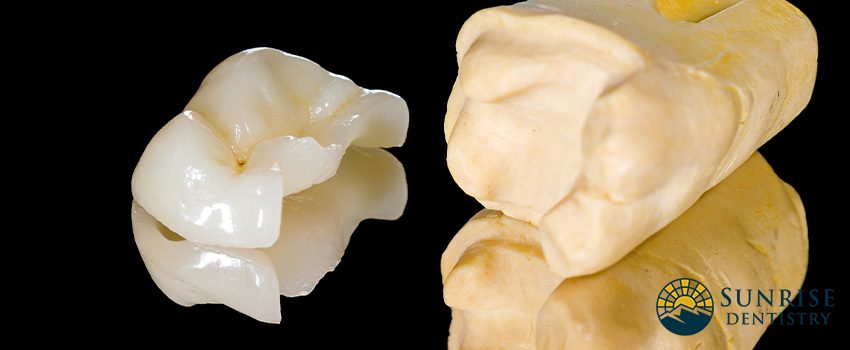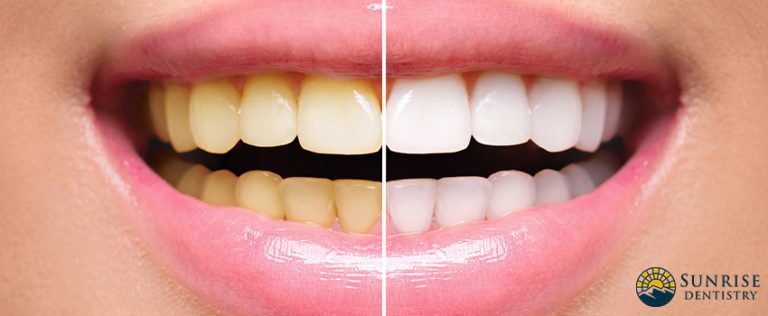No dental cavity and tooth decay are the same, so there is no single way to repair these conditions. Usually, dental fillings are used for small cavities and dental crowns for deeper, more extensive tooth decay.
However, there are times when a crown or filling may be too much or too little to fix dental decay. For moderate damage, dental inlays and onlays are the most suitable; they are more durable than traditional fillings but less intrusive than crowns, which allows them to provide the right amount of material to fill in those gaps.
Tooth inlays and onlays are part of cosmetic dentistry. Cosmetic dentists perform procedures using these fillings to improve both teeth’ function and appearance. Not only do they restore teeth’ ability to bite or chew, but they also keep them clean, healthy, and protected against further damage.
Given that modern fillings are more discreet today, you’ll have a long-lasting, beautiful smile without worrying about serious issues.
What Is a Dental Inlay?
Dental inlays are restorations designed to cover cavities or stained areas in the grooves of the tooth. They are manufactured in labs based on molds created by the dentist. To blend in with the rest of your teeth easily, labs often use porcelain in making tooth inlays, which can match the color, size, and shape of your teeth. It is also durable and stain-resistant, which makes dental inlays last longer.
Dentists use them to help patients achieve better function and form for their teeth by filling in areas that a traditional filling can’t. They are also used to cover small stained or infected areas between molar cusps. Inlays, however, are expensive due to the materials used in making them.
What Is a Dental Onlay?
These are similar to dental inlays in terms of materials used and function. In general, a dental onlay falls in between a dental crown and a dental inlay. Designed to cover the top of your tooth, they are best suited for restoring larger areas of tooth decay that extend over the cusp of the teeth and if most of the surrounding tooth structures have been removed.
Dental Inlay vs. Onlay
Duration
One of the most interesting benefits of dental inlays and onlays is how sustainable they are. Thanks to their firm porcelain foundation, they can last well over five years or even up to 30 with proper care.
There are a lot of factors that affect how long dental inlays and onlays last. Without proper maintenance, these restorations will wear out faster than expected.
Cost
An inlay or onlay costs more than traditional fillings. Still, the exact amount would depend on the materials used and the extent of the damage.
Inlays may cost similarly to onlays, but it’s more common for onlays to cost more because it involves more extensive restoration. In general, the estimated amount for these types of restorations is between 650 to 1,200 dollars per tooth.
Materials Used
Porcelain is the most expensive of all materials used for inlays and onlays, as it offers a natural look similar to tooth enamel. On the one hand, gold is the least discreet and most affordable option. Some opt for composite resin; it’s cheap, but it’s the least durable and the most prone to staining and discoloration.
Procedure
Both procedures involve the removal of tooth decay. The main difference is how they fill in these spaces. Fillings fill in small cavities; inlays fill in cavities within the grooves of your tooth. Onlays cover larger areas than inlays, often extending over the cusps of the teeth, replacing chewing surfaces.
Compared to traditional fillings that usually take one appointment to finish, dental inlays and onlays can take up to two: one for cleaning, preparing, and making impressions of the affected tooth; another for cementing the inlays or onlays onto the tooth.
Who Are Ideal Candidates for These Treatments?
Patients with large fillings who are looking for a longer-lasting restoration treatment are ideal candidates for the procedure. Dentists recommend dental inlays for patients who have cavities that traditional treatments can’t fill out.
To be eligible for inlays or onlays, you should have enough remaining tooth structure left to support the restoration. Also, you should be committed to applying excellent oral hygiene habits like brushing and flossing daily and visiting your dentist for a checkup.
Visit Your Dentist Today
If you’re dealing with cavities and tooth decay, it’s time to set an appointment with our dentists today!
Sunrise Dentistry has a team of dedicated Durango, CO, dentists who can work with you in maintaining good oral health. We offer a wide range of professional dental services, including dental inlays and onlays. For inquiries and appointments, contact us today!





